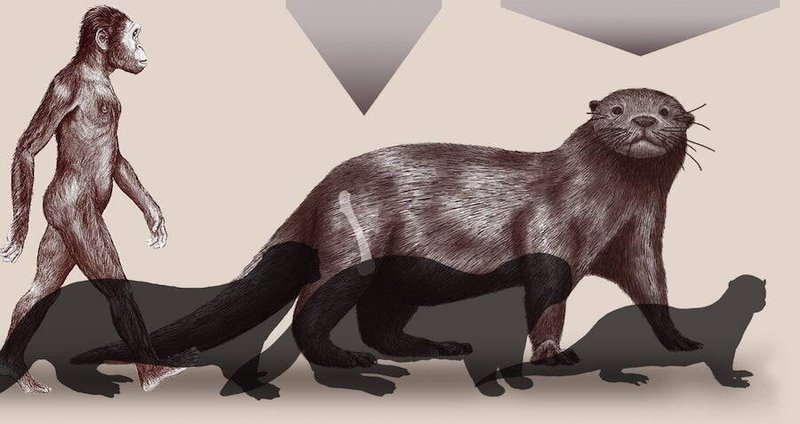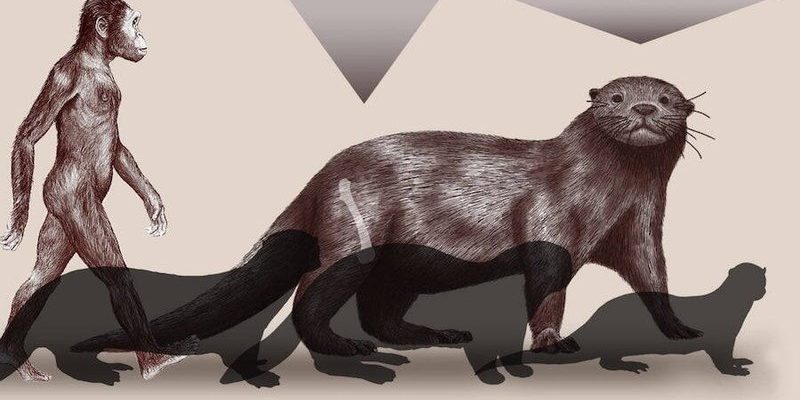
The giant otter, known scientifically as *Pteronura brasiliensis*, has a story that goes back millions of years. They are particularly well-known for their social behavior, living in family groups and even hunting cooperatively. This article will explore their origins, adaptations, and the ecological roles they play in their habitats. You might be surprised at just how much these creatures have evolved to thrive in some of the most challenging environments.
Origins of the Giant Otter
To understand the giant otter’s evolutionary history, we must travel back in time to the Miocene epoch, around 23 to 5 million years ago. During this period, the ancestors of modern otters began to take shape. The modern otter family, *Mustelidae*, diversified, leading to various species adapted to different environments. The giant otter we know today is believed to have evolved from these early otters, particularly those that adapted to freshwater habitats.
The giant otter is part of a broader group of carnivorous mammals known as mustelids, which also includes badgers, ferrets, and martens. These creatures share a common ancestry, and their evolution has been shaped by the need to hunt efficiently in diverse habitats. The giant otter’s size and swimming abilities are a testament to how they adapted to become top predators in the waters of South America.
You might be wondering why size matters in evolution. Well, in the case of the giant otter, being larger allows them to hunt bigger prey, such as fish and crustaceans. Additionally, their size helps them fend off predators and compete with other aquatic hunters.
Physical Adaptations
Giant otters are remarkable for their physical adaptations that make them excellent swimmers and hunters. Their long bodies, webbed feet, and streamlined shape allow them to navigate rivers and lakes with ease. These adaptations are crucial since they spend most of their lives in the water, hunting and playing.
One of the most striking features of the giant otter is its thick fur. This fur helps keep them warm in cooler waters and insulates them against the changing temperatures of the environments they inhabit. Interestingly, their fur also repels water, which is vital for maintaining buoyancy while hunting.
Their strong jaws and sharp teeth are designed for cracking tough shells and catching slippery fish. You might liken it to having a built-in toolbox; everything they need for survival is right there in their mouths! Plus, their keen sense of hearing and excellent eyesight aid them in locating prey, even in murky waters.
Social Behavior and Family Structure
Giant otters are known for their fascinating social structures. Unlike many other solo-dwelling animals, they live in family groups, typically consisting of a breeding pair and their offspring. You can think of them as the “otter family unit”—working together to hunt and raise young ones. This social dynamic is essential for their survival.
Living in groups allows giant otters to hunt more effectively. They have been observed hunting cooperatively, which means they can catch larger prey that would be challenging for a single otter to tackle alone. Imagine a team of otters coordinating their movements—diving, swimming, and surfacing in unison to outsmart fish. It’s quite the sight!
Moreover, these social structures provide support for the young otters as they learn essential skills from their parents and siblings. The younger otters often begin hunting with their families at a young age, gaining the experience needed to thrive in the wild.
Habitat and Distribution
Giant otters are primarily found in the rivers, lakes, and wetlands of South America. Countries like Brazil, Peru, and Colombia are home to these vibrant creatures. Their preference for clean, well-oxygenated waters makes them sensitive to changes in their environment. They thrive in areas rich in fish and other aquatic life, which is crucial for their diet.
You might ask, “Why are they so picky about their habitats?” Honestly, it comes down to their survival. Clean water is vital not only for finding food but also for maintaining healthy populations. Pollution, habitat destruction, and climate change are significant threats to their existence, making conservation efforts all the more important.
In recent years, efforts have been made to protect their habitats and raise awareness about their plight. Organizations around the world are working tirelessly to ensure that these beautiful creatures continue to thrive in their natural homes.
Conservation Status
The giant otter is currently classified as endangered, and its population has faced substantial declines over the years. Factors such as habitat destruction, pollution, and hunting have significantly impacted their numbers. Once widely distributed, they have lost much of their range, often limited to protected areas now.
Conservation efforts are critical for their survival. Organizations and local communities are working to create protected zones, combating illegal hunting, and raising awareness about the importance of clean waterways. It’s similar to creating a safe neighborhood for our furry friends to thrive without threats.
You might be curious about what you can do to help. Supporting wildlife conservation initiatives, spreading awareness, and choosing sustainable products are all ways to contribute to the preservation of this remarkable species.
Future of the Giant Otter
Looking ahead, the future of the giant otter will depend largely on our efforts to protect their habitats and promote biodiversity. As we face climate change and environmental challenges, it’s essential to remember that every action counts. Protecting the ecosystems in which these otters live is not just about saving them; it’s about maintaining the balance of nature.
Encouraging ecotourism can also provide financial support for conservation projects while allowing people to appreciate these magnificent animals in their natural environments. This way, we create a win-win situation where both wildlife and human interests can flourish.
As the world evolves, so too will the giant otter. Their adaptability has allowed them to survive many changes in their environment, and with continued support, we hope to see their populations recover and thrive.
In conclusion, the evolutionary history of the giant otter reveals the intricate connections between species, their environments, and our responsibility to protect them. As we learn more about these fascinating creatures, let’s commit to ensuring their survival for generations to come. So, next time you see an otter, remember their incredible journey through time and the challenges they face today. Together, we can help make a difference.

